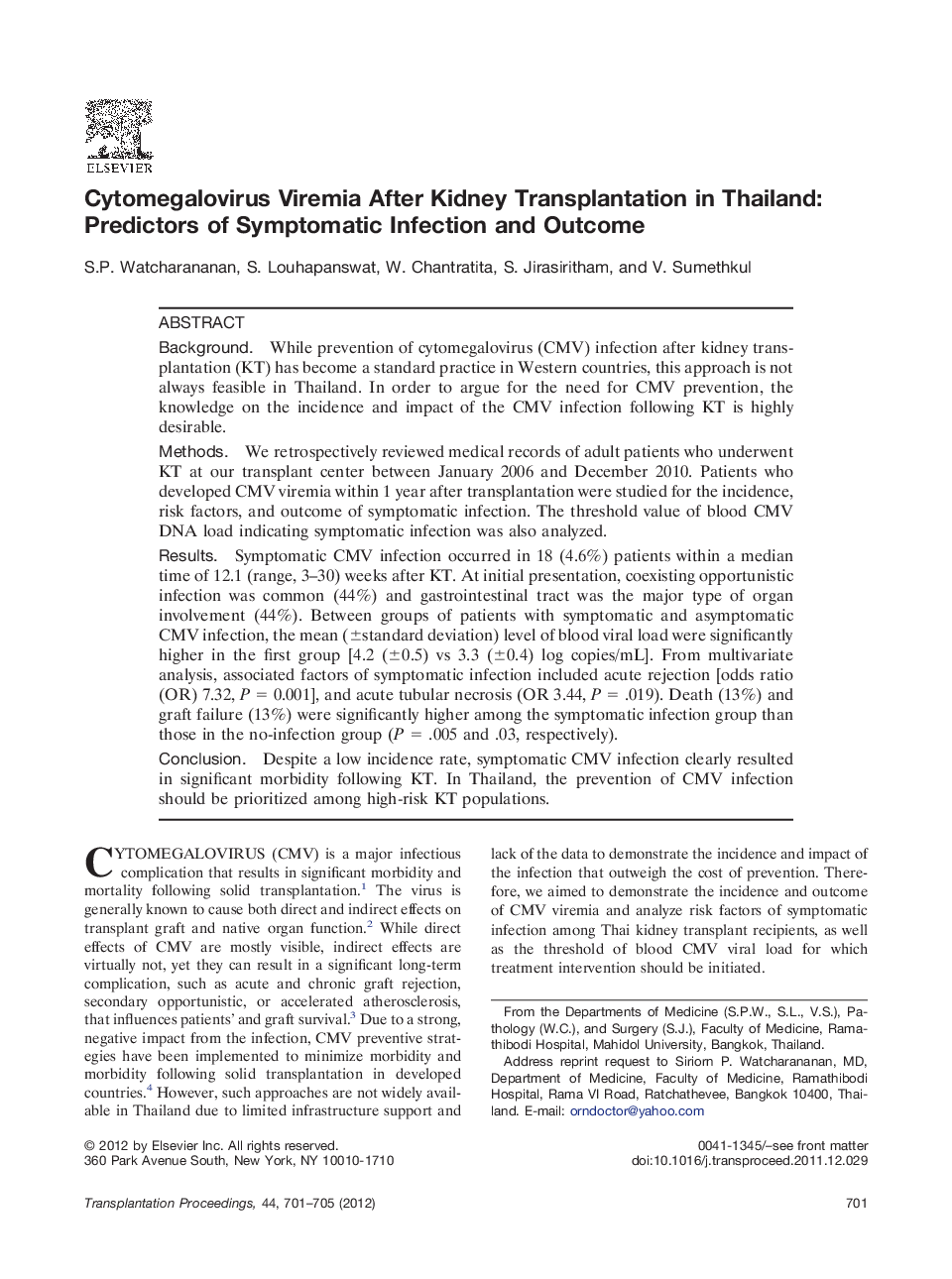| Article ID | Journal | Published Year | Pages | File Type |
|---|---|---|---|---|
| 4257773 | Transplantation Proceedings | 2012 | 5 Pages |
BackgroundWhile prevention of cytomegalovirus (CMV) infection after kidney transplantation (KT) has become a standard practice in Western countries, this approach is not always feasible in Thailand. In order to argue for the need for CMV prevention, the knowledge on the incidence and impact of the CMV infection following KT is highly desirable.MethodsWe retrospectively reviewed medical records of adult patients who underwent KT at our transplant center between January 2006 and December 2010. Patients who developed CMV viremia within 1 year after transplantation were studied for the incidence, risk factors, and outcome of symptomatic infection. The threshold value of blood CMV DNA load indicating symptomatic infection was also analyzed.ResultsSymptomatic CMV infection occurred in 18 (4.6%) patients within a median time of 12.1 (range, 3–30) weeks after KT. At initial presentation, coexisting opportunistic infection was common (44%) and gastrointestinal tract was the major type of organ involvement (44%). Between groups of patients with symptomatic and asymptomatic CMV infection, the mean (±standard deviation) level of blood viral load were significantly higher in the first group [4.2 (±0.5) vs 3.3 (±0.4) log copies/mL]. From multivariate analysis, associated factors of symptomatic infection included acute rejection [odds ratio (OR) 7.32, P = 0.001], and acute tubular necrosis (OR 3.44, P = .019). Death (13%) and graft failure (13%) were significantly higher among the symptomatic infection group than those in the no-infection group (P = .005 and .03, respectively).ConclusionDespite a low incidence rate, symptomatic CMV infection clearly resulted in significant morbidity following KT. In Thailand, the prevention of CMV infection should be prioritized among high-risk KT populations.
